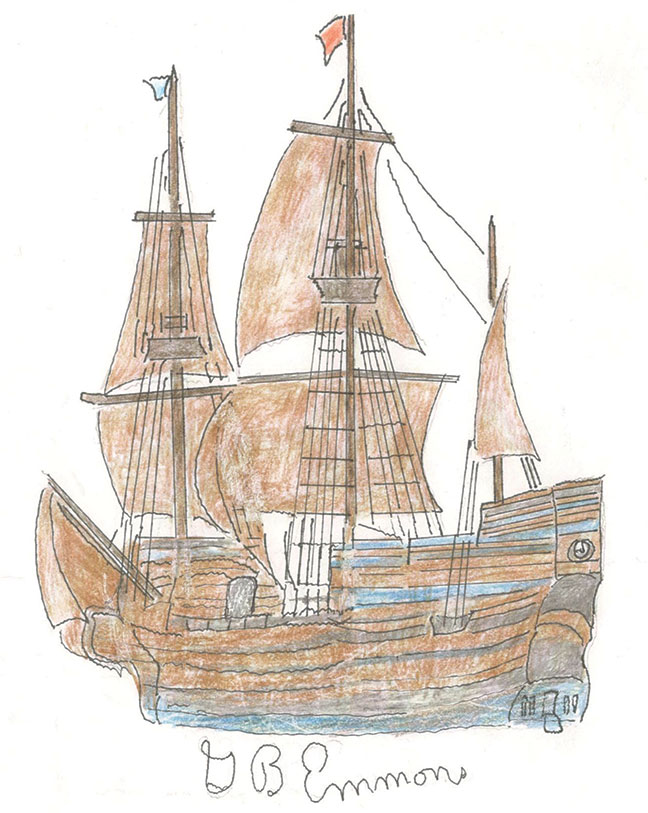The historic, 180-ton, 110-foot Dutch cargo-class square-rigger that carried 135 passengers some grueling 10 weeks at sea across more than 3,000 miles of the world’s deepest and stormiest ocean was not commissioned to carry people at all. However, in 1620 it was contracted from co-owner Christopher Jones by pilgrims tired of religious persecution and willing to launch a hazardous journey from the old religious world to another continent. There, they would take a chance on the new spiritual promised land.
The pilgrims had hoped to reach America in late October using two ships, including the Speedwell, which had to be patched up before they began, until August 6 when they finally set sail for America. But the Speedwell began leaking again, and they pulled into the town of Dartmouth for repairs. After the two ships had then been about 300 miles at sea, they had to return to Plymouth and go it alone on the Mayflower.
Finally, on September 6, they again headed for America. They had already been living onboard for a month, and were now crowded with some passengers of the Speedwell. The living quarters were so cramped in an area of 80 by 20 feet under a ceiling about 5 feet high that some were unable to stand up straight for a period of about two months.
Soon the weather changed for the worst, as northeast winds hurled huge waves against the ship, eventually damaging the main beam in the hull that risked sinking far from land. Fortunately, a passenger had brought a metal jackscrew made for building houses that was used to repair the beam and restore seaworthiness to the craft so it could resume the trip to its original destination.
Among the passengers were two important influences on their mission, William Bradford and Miles Standish, who brought everyone together to sign the famed Mayflower Compact. The contractual agreement signed before going ashore established a rudimentary form of democracy in which each member was to contribute to the safety and welfare of the planned settlement.
Cape Cod was sighted as the sun rose on November 9, and they decided to head south to the mouth of the Hudson River, their original objective, and now were just a few degrees off course from their original destination. Once again, they encountered rough seas and almost shipwrecked. They were forced to turn back north and spent the next month and a half exploring Cape Cod to determine where they would build their plantation.
Plymouth itself had much earlier been a Wampanoag settlement that had been wiped out by the smallpox epidemic. On Christmas day 1620, they decided that God had favored them by clearing the way for their taking possession of such a prime location to build on, and they started construction.
William Bradford led his separatist followers in prayer to give thanks to God for such a good harbor after delivering them safely over a vast and furious ocean and delivering them from all perils and miseries thereof to the firm and staple earth, their proper element.
Today, almost 400 years later, Mayflower II, the iconic replica of the renowned and celebrated vessel that was to bring a pivotal landing in the new world to ensure the future of religious freedom in America can be seen unfurling sails along our shores.
By George Emmons
